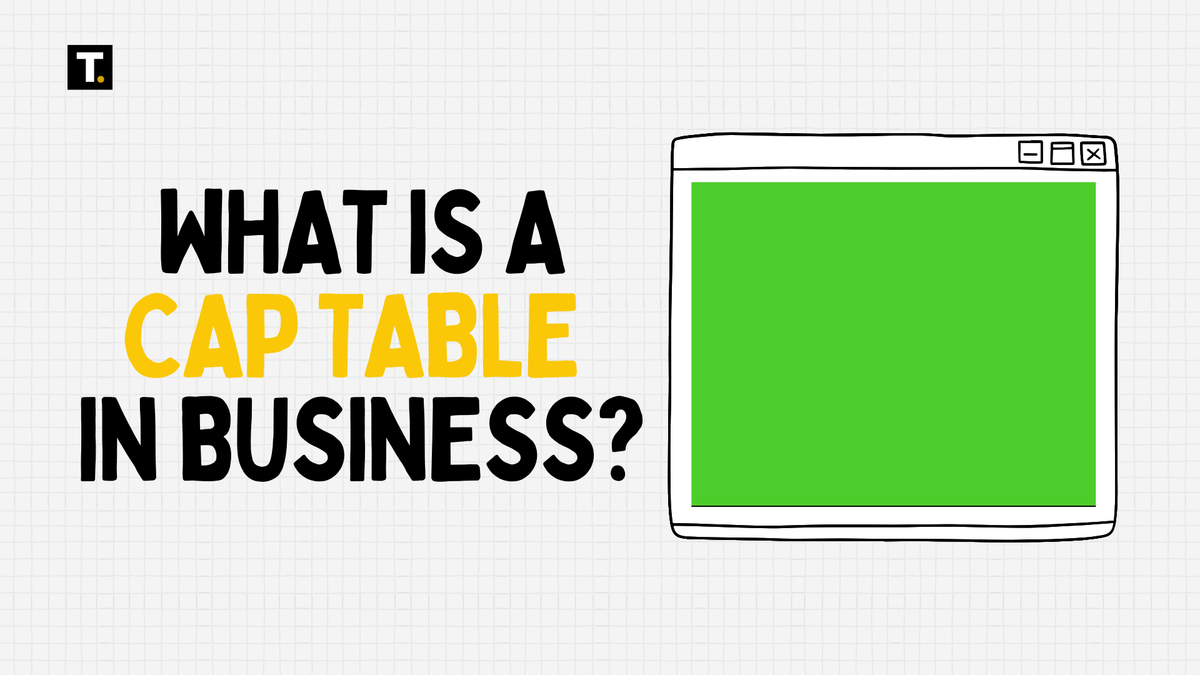Photo by Josh Sorenson / Unsplash
💡
TL;DR: Software as a service (SaaS) is a software model where applications run in the cloud and users access them online without installations.
In the past, software was something you purchased once and installed manually on your device. For example, if you needed an antivirus program, you would buy the installation disc from a computer shop, set it up on your system, and repeat the process whenever a new version came out.
Today, that is no longer the case. Instead of installing software locally, users now access applications through the internet. Updates happen automatically, and there’s no need to manage storage, compatibility, or manual upgrades. The provider handles all of that in the cloud.
This is the core idea behind a SaaS (Software as a Service) business model.
VIDEO: What Is a Cap Table in Business
Capitalization tables help you maintain the calculation of companies market value and even others.

What Is a SaaS Business Model?

A SaaS business runs by hosting software online and giving users access on a subscription basis. Instead of paying once, customers pay monthly or yearly to keep using the service. In return, they get continuous updates, cloud storage, and access from any device connected to the internet. The provider manages the security, performance, and maintenance, while users log in and use the tool.
This approach offers predictable revenue for businesses and gives users continuous access to the latest version of the software on any device with an internet connection.
How the SaaS Business Model Works

Understanding how a SaaS product works becomes easier once you think of it as software you borrow continuously rather than software you own once. Everything happens through the cloud. You open a browser or app, sign in, and the full system is already running behind the scenes.
Cloud-Based Delivery: Software runs on remote servers that the provider maintains. You’re connecting to a system that’s always on, always updated, and always reachable from wherever you are. Access replaces ownership.
Subscription Model: Rather than paying up front, users subscribe. Some pay monthly, others yearly. The plan adjusts based on needs—team size, features, storage, and usage level. The model grows and shrinks alongside your workflow rather than forcing a commitment that might not fit.
Provider Management: All the technical work stays on the provider’s side. Server maintenance, data backup, security patches, bug fixes, system performance—handled quietly in the background. Teams using the software don’t need a dedicated IT department to keep the lights on.
Automatic Updates: Updates arrive automatically. When new features roll out, everyone gets them at the same moment. No manual downloads. No version mismatches across devices. Work keeps moving without interruption.
Accessibility: Because everything lives online, people can log in from anywhere—home, office, coworking space, airport lounge, wherever life is happening. Remote teams especially benefit here, since nobody has to be tied to one machine or one building to get work done.
SaaS works because it respects how people work today—mobile, collaborative, and constantly shifting between contexts.
Why the SaaS Business Model Is Widely Adopted

The SaaS model has grown because it removes much of the weight and complexity traditionally associated with software. Organizations no longer need to purchase hardware, install programs, or assign teams to manage updates and troubleshooting. Instead, they access software the same way they access the internet on demand.
For businesses, this means lower upfront costs and more predictable spending. They pay only for what they use, and can scale up or down as their needs change. For users, SaaS offers convenience and flexibility. Work can continue across locations, teams, and devices without interruption. In fast-changing environments, the ability to stay updated automatically without manual upgrades is a practical advantage.
This combination of reduced overhead, continuous improvement, and ease of access explains why SaaS has become the standard model for modern software delivery.
Examples of SaaS Business Model

Now that the world is more advanced than it was a few decades ago, companies adopting the SaaS model are doing more than just offering convenience. They’re reshaping how businesses operate. Instead of buying software once and dealing with installation, upgrades, and server issues, companies now subscribe to tools that grow with them. Some of the most familiar names today are built entirely on this model, companies like Google, Zoom, Slack, Salesforce, and even Netflix. They’ve shown that people are comfortable paying for ongoing value, especially when the product is always updated, always accessible, and doesn’t require any technical hassle.
The shift has also opened doors for newer startups, because they don’t need to build physical distribution channels or maintain complicated installations. They just build, host, and improve the service while customers sign in from anywhere. This is why SaaS has become one of the most common business models across tech today.
Challenges with running SaaS Business Model

Even with all its benefits, running a SaaS business isn’t without challenges. One of the biggest is customer retention. Since users pay month-to-month or year-to-year, they can cancel at any time if they don’t see continued value. This means SaaS companies have to keep improving the product, fixing issues quickly, and supporting customers well to avoid churn.
There’s also the cost of infrastructure. Because the software is hosted in the cloud, the provider is responsible for servers, security, uptime, and scaling the system as more users sign up. That can get expensive, especially for companies that are still growing. On top of that, competition is intense. For almost every SaaS product, there are several alternatives offering similar features, so companies need a clear way to stand out.
Security and data privacy add another layer of pressure. Customers are trusting the provider with sensitive information, so any breach or downtime can damage brand reputation fast.
So while SaaS offers flexibility and recurring revenue, maintaining that model requires continuous improvement, strong support, and reliable infrastructure.
WHAT IS: Bootstrapping in Business
Bootstrapping is how many entrepreneurs turn ideas into businesses without outside investors.

Conclusion
SaaS market is expected to keep expanding, with reports showing that about 70% of business applications in use today are already SaaS-based, rising toward roughly 85% by 2025. That pace says a lot about how deeply cloud-delivered software has become part of everyday work.
Growth is driven by flexibility, lower upfront costs, and the freedom to scale without investing in heavy infrastructure. Companies want tools that can be deployed quickly and adjusted as needs change. Users also prefer software that updates quietly in the background and supports work across different devices without friction.
Looking ahead, development will lean more toward seamless integrations, stronger automation, and smarter personalization. The next wave of standout SaaS products will be the ones that feel intuitive, reduce effort, and adapt to how people actually work—not the other way around.


















